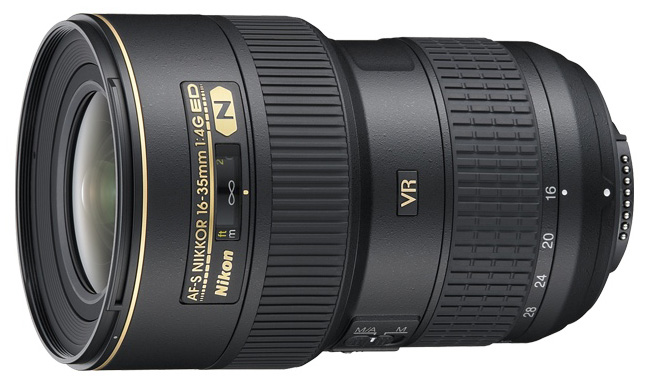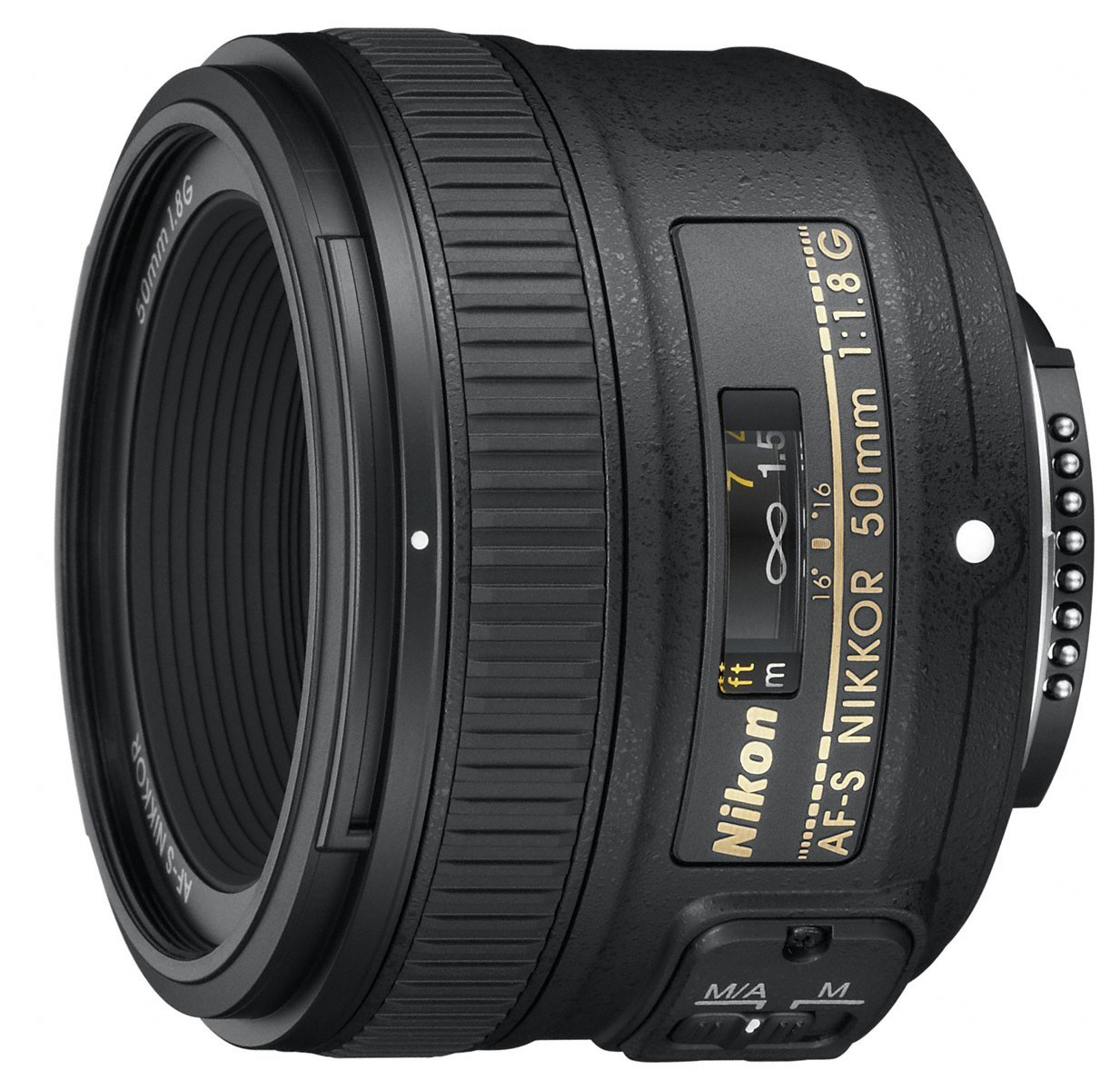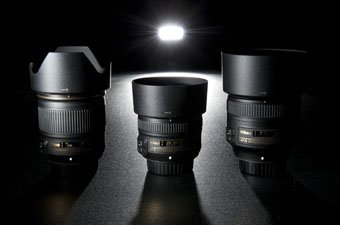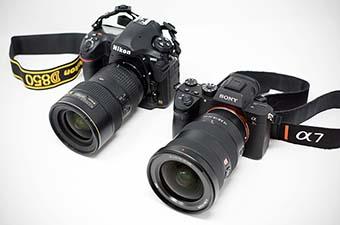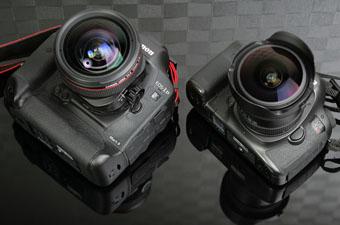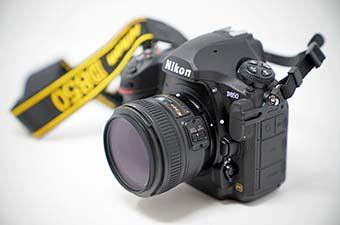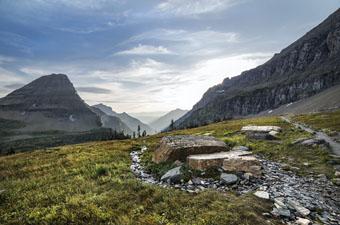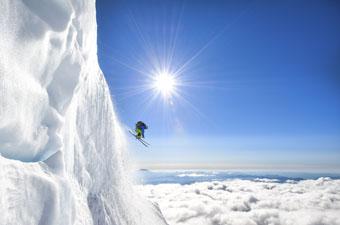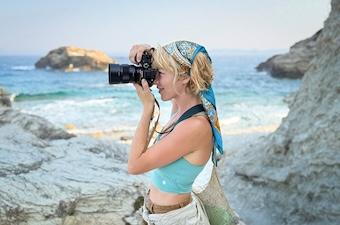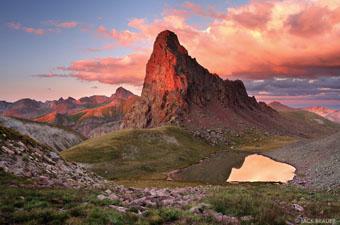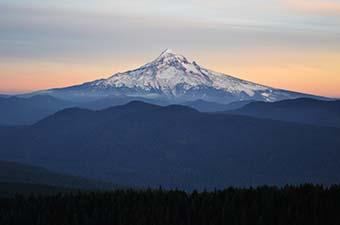The Nikon D610 is one of the best values of any full-frame camera, currently selling for under $1,500 for the body. The D610 replaced the D600, a promising release that was plagued by an unusual accumulation of oil and dust on the sensor. To help solve the issue, Nikon sealed the D610 to the standards of its more expensive full-frame DSLRs like the D810. Below are our picks for the best lenses for Nikon D610, including the kits options and other prime and zoom lenses from wide-angle to telephoto. Nikon released the D750 in the fall of 2014, another great camera but pricier than the D610.
Nikon D610 Kit Lenses
Nikon 24-85mm f/3.5-4.5 VR ($2,197 for the kit)
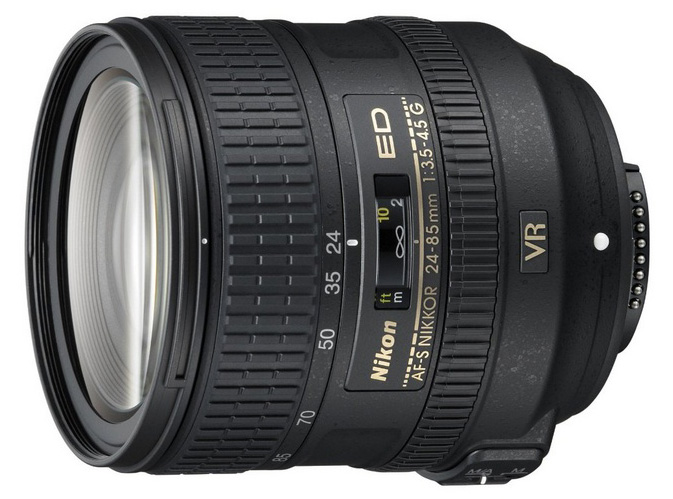
Weight: 16.4 oz.
Max Aperture: f/3.5
Pros: Versatile and lightweight for a zoom lens.
Cons: Can be soft when wide open.
There are two main kit options for the D610, and both are viable walk-around lenses that perform well in most conditions. The Nikon 24-85mm VR is a solid lens for travel and portraits and ideal for those who don’t want to carry and switch out multiple prime lenses. It’s wide enough for landscapes and covers the heart of the most used focal lengths for everyday use. The Nikon 24-85mm does have some softness in the corners when wide open. However, at less than $600 with the kit, it’s a nice alternative to many of the pricier options below. You also can add the Nikon 70-300mm f/4.5-5.6 for a two-lens bundle, which is great for those who want a simple and complete camera bag at a reasonable price.
See the Nikon 24-85mm Kit
Nikon 28-300mm f/3.5-5.6 VR ($2,497 for the kit)
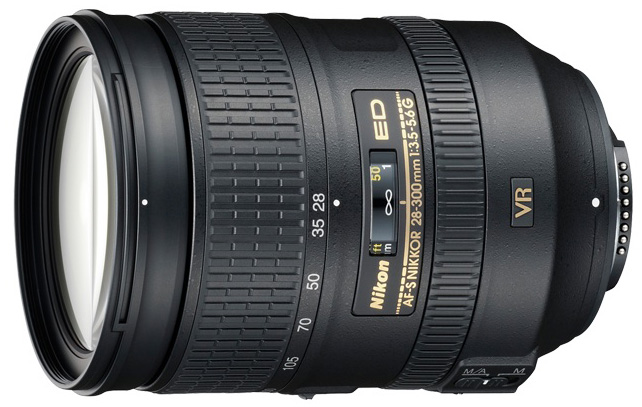
Weight: 28.2 oz.
Max Aperture: f/3.5
Pros: Versatile and a great value for an FX lens.
Cons: Heavy and some distortion at the ends.
Based on the popularity of all-in-one lenses like the 18-200mm and 18-300mm for DX-format cameras, the Nikon 28-300mm VR was built specifically for FX (it’s currently the only FX all-in-one lens). Like most zoom lenses, the 28-300mm has some distortion at the ends (the Nikon D610 does have an automatic distortion control mode built into the camera) but it's sharp throughout its zoom range and captures excellent images overall. It also has vibration reduction for hand-held photos in low light. One thing you’re sacrificing here is wide-angle capability as 28mm isn’t optimal for landscapes (we prefer 21mm or 24mm), but this is an impressive lens nevertheless.
See the Nikon 28-300mm Kit
Wide-Angle Lenses
Nikon 16-35mm f/4 ($1,257)
Weight: 24 oz.
Max Aperture: f/4
Pros: A good value for a wide-angle zoom.
Cons: Low light performance can't match the 14-24mm f/2.8.
It's tough to argue with the quality of the Nikon 14-24mm f/2.8 below, but the Nikon 16-35mm f/4 is cheaper, lighter, and covers more focal lengths. The biggest difference is the latter’s maximum aperture of f/4—the Nikon 14-24mm clearly is superior in low light. Otherwise, the Nikon 16-35mm is a quality wide-angle zoom lens that pairs very well with the D610. It also comes with vibration reduction while the Nikon 14-24mm lens does not.
See the Nikon 16-35mm
Nikon 14-24mm f/2.8 ($1,997)
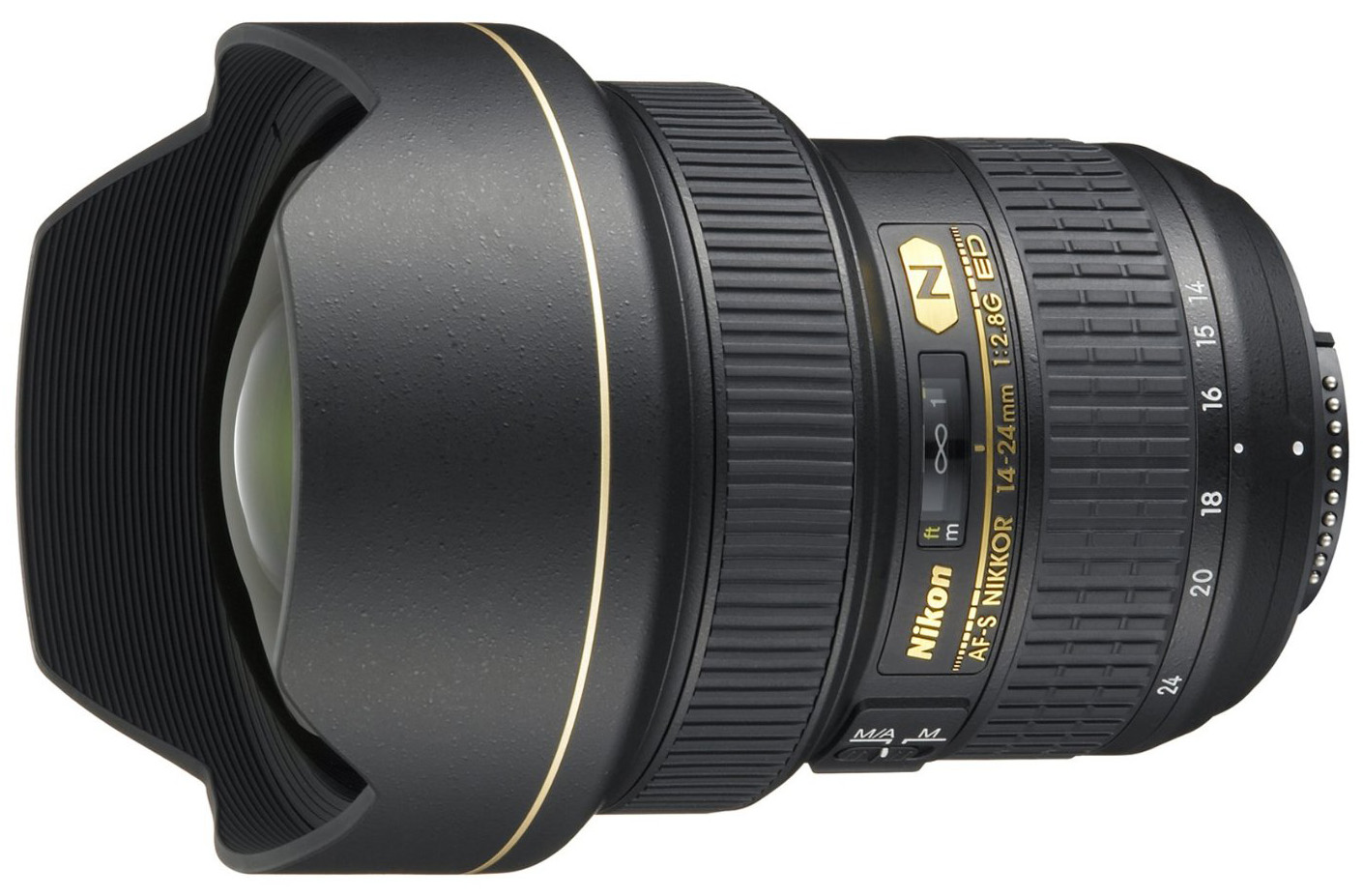
Weight: 34.2 oz.
Max Aperture: f/2.8
Pros: Nikon's top wide-angle zoom.
Cons: Bulky and expensive.
The Nikon 14-24mm f/2.8 is the top wide-angle zoom lens for FX format cameras, producing razor sharp images with low distortion. It’s also excellent in low light for a lens of this type with a fixed maximum aperture of f/2.8. However, the price tag of nearly $2,000 is too much for most people—it’s now more than the cost of the D610 camera body. The 14-24mm is a terrific lens, but for the Nikon D610 we recommend saving with the cheaper Nikon 16-35mm f/4 above.
See the Nikon 14-24mm
Zeiss 21mm f/2.8 Distagon for Nikon ($1,805)
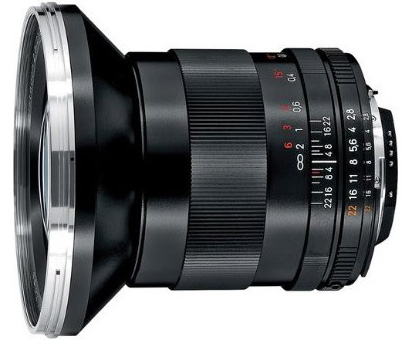
Weight: 21.2 oz.
Max Aperture: f/2.8
Pros: Exceptional optics and almost no distortion.
Cons: Manual focus isn't for everyone.
The manual focus Zeiss 21mm f/2.8 Distagon is the world’s finest wide-angle lens—it’s extremely sharp all the way to the corners with almost no distortion. If you prefer autofocus, go with the Nikon 14-24mm or Nikon 16-35mm above, but most people who try manual focus find that it’s easy, accurate, and fun. The Zeiss 21mm is heavy for a prime lens at over 21 ounces but the optics are unrivaled and it’s used by a number of top landscape photographers.
See the Zeiss 21mm Distagon
Mid-Range and Portrait Lenses
Nikon 24-70mm f/2.8 ($1,887)
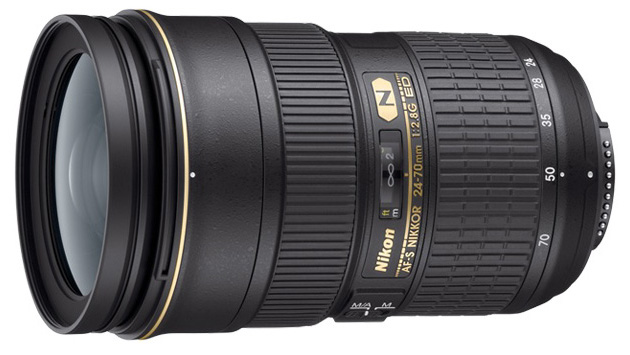
Weight: 31.8 oz.
Max Aperture: f/2.8
Pros: Versatility and sharpness.
Cons: Heavy.
The Nikon 24-70mm f/2.8 is Nikon’s top mid-range zoom lens. From an optical perspective, the 24-70mm is a winner—it’s sharp throughout its zoom range, captures vibrant colors, and has fast and accurate autofocus. For those who don’t mind carrying a hefty 31.8 ounces, this is a professional-grade lens and very versatile for travel and everyday use (considering that it replaces a bag full of prime lenses, perhaps the weight isn’t as much of an issue).
See the Nikon 24-70mm
Nikon 24-120mm f/4 ($1,297)
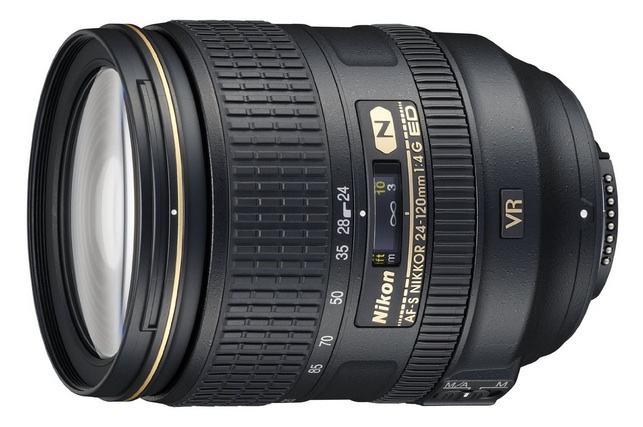
Weight: 23.6 ounces.
Max aperture: f/4
Pros: Useful focal length range from wide-angle to medium telephoto.
Cons: Low light performance and a bit on the heavy side.
Following in the footsteps of the Nikon 24-85mm f/4 above, the 24-120mm f/4 is a walk-around lens with an even longer zoom range. For portrait shooters, the extra 35mm of focal length is very useful, covering shots all the way from wide-angle to medium telephoto. This lens also has fast autofocus, vibration reduction, and is noticeably sharper than the 24-85mm. The Nikon 24-120mm is bulky at over 23 ounces and its maximum aperture of f/4 means that the lens can struggle when natural light is low. And because it isn’t offered in a kit with the D610, you’re paying about $700 more for than you would for the 24-85mm. But we like the performance of this lens for the price and Nikon is proving that big zoom ranges can still equate to great images.
See the Nikon 24-120mm
Nikon 35mm f/1.4 ($1,700)
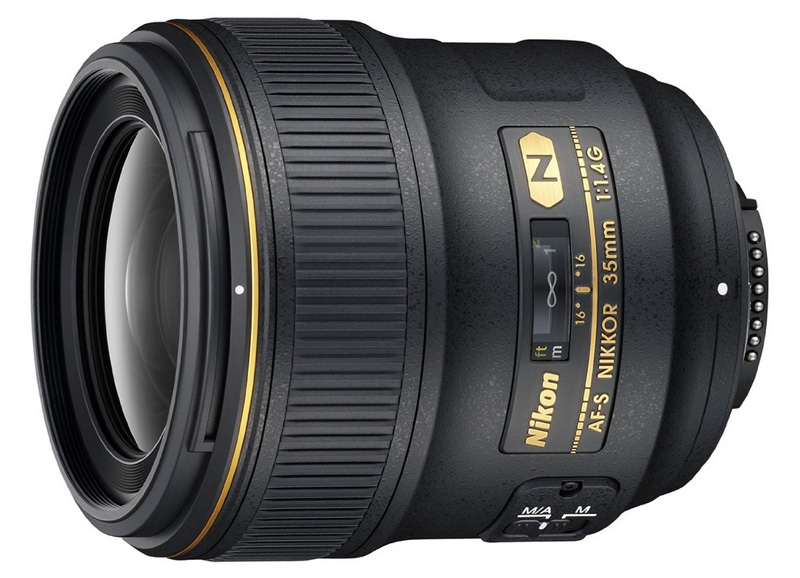
Weight: 21.2 oz.
Max Aperture: f/1.4
Pros: Excellent optical performance.
Cons: A lens for professionals with a price tag to match.
35mm is a challenging focal length for Nikon FX format cameras, and the polarity of lens options is the most prominent of any distance. The Nikon 35mm f/1.4 is an high-end lens with excellent sharpness, bokeh, and low light performance (one notable shortcoming is its mostly plastic exterior). For most D610 users, this lens is overkill (the Nikon 24-70mm below is more versatile and similar in price). We’ve listed the lens here because optically, it’s by far the best 35mm lens for FX. At the other end of the spectrum, the Nikon 35mm f/2 is a serviceable lens at a reasonable price.
See the Nikon 35mm f/1.4
Nikon 50mm f/1.8 ($217)
Weight: 6.6 oz.
Max Aperture: f/1.8
Pros: Sharp and cheap.
Cons: Plastic build.
All things considered, the Nikon 50mm primes are some of best FX lenses on the market. They’re inexpensive, sharp, light, and capture great images. The Nikon 50mm f/1.8 is the cheaper of the two options—it produces nice bokeh, has fast and accurate autofocus, and weighs less than 7 ounces. If you need even better low-light capability, the Nikon 50mm f/1.4 ($469) is superior in that category. You can’t go wrong with either model and it’s really a question of how much and you intend to use a 50mm lens and under what conditions.
See the Nikon 50mm
Telephoto Zoom Lenses
Nikon 70-300mm f/4.5-5.6 ($587)
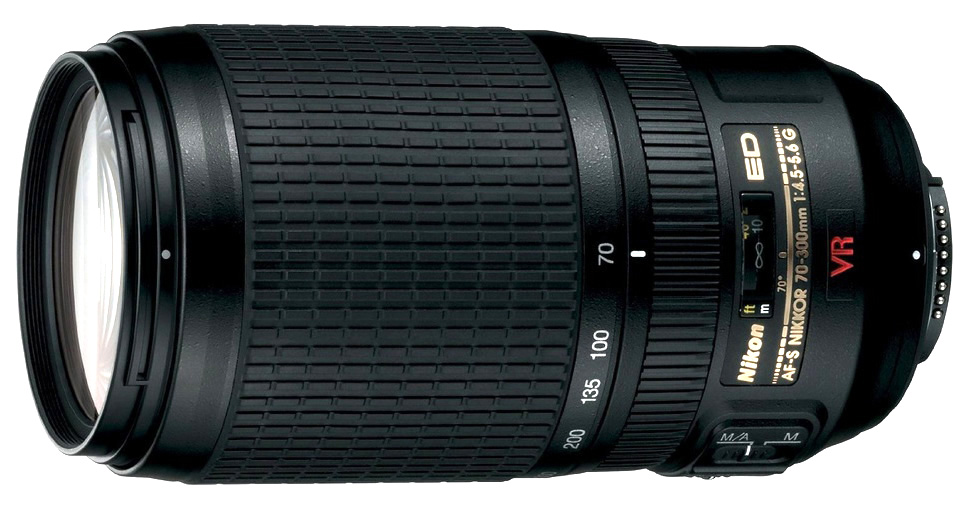
Weight: 26.3 oz.
Max Aperture: f/4.5
Pros: Cheap.
Cons: Softness at the ends and low light performance.
The Nikon 70-300mm (with an equivalent zoom range of 105-450mm on DX-format cameras) has a huge range and is one the best values of any FX lens. The biggest shortcoming is a maximum aperture of f/4.5—the lens does have vibration reduction but those who frequently shoot in low light should consider the more expensive Nikon 70-200mm f/2.8 below. The Nikon 70-300mm is fully compatible on Nikon DX format cameras and makes a fun long-range zoom.
See the Nikon 70-300mm
Nikon 70-200mm f/4 ($1,397) or Nikon 70-200mm f/2.8 ($2,397)
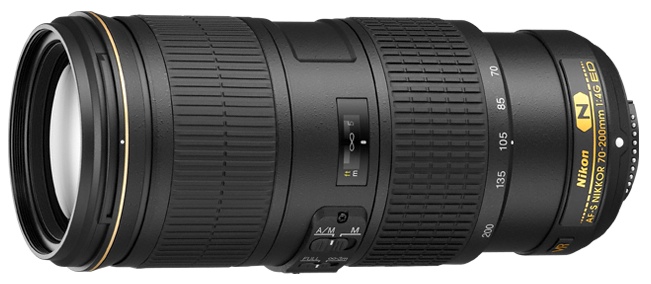
Weight: F/4: 29.9 oz.; f/2.8: 54.3 oz.
Max Aperture: F/4 or f/2.8
Pros: Both have excellent optical performance.
Cons: F/4: Low light performance; f/2.8: weight and cost.
Nikon has created two versions of the 70-200mm telephoto zoom for FX: one with a maximum aperture of f/4 and the other with a maximum aperture of f/2.8. The f/2.8 is a terrific lens, but for those who don’t want to make such a big investment or carry as much weight, the f/4 version is considerably lighter and $1,000 cheaper. Both lenses have vibration reduction. If you don’t often shoot in low light, the Nikon 70-200mm f/4 is a quality telephoto zoom lens to pair with the Nikon D610. Professional photographers and those with a big budget prefer the Nikon 70-200mm f/2.8.
See the Nikon 70-200mm f/4

